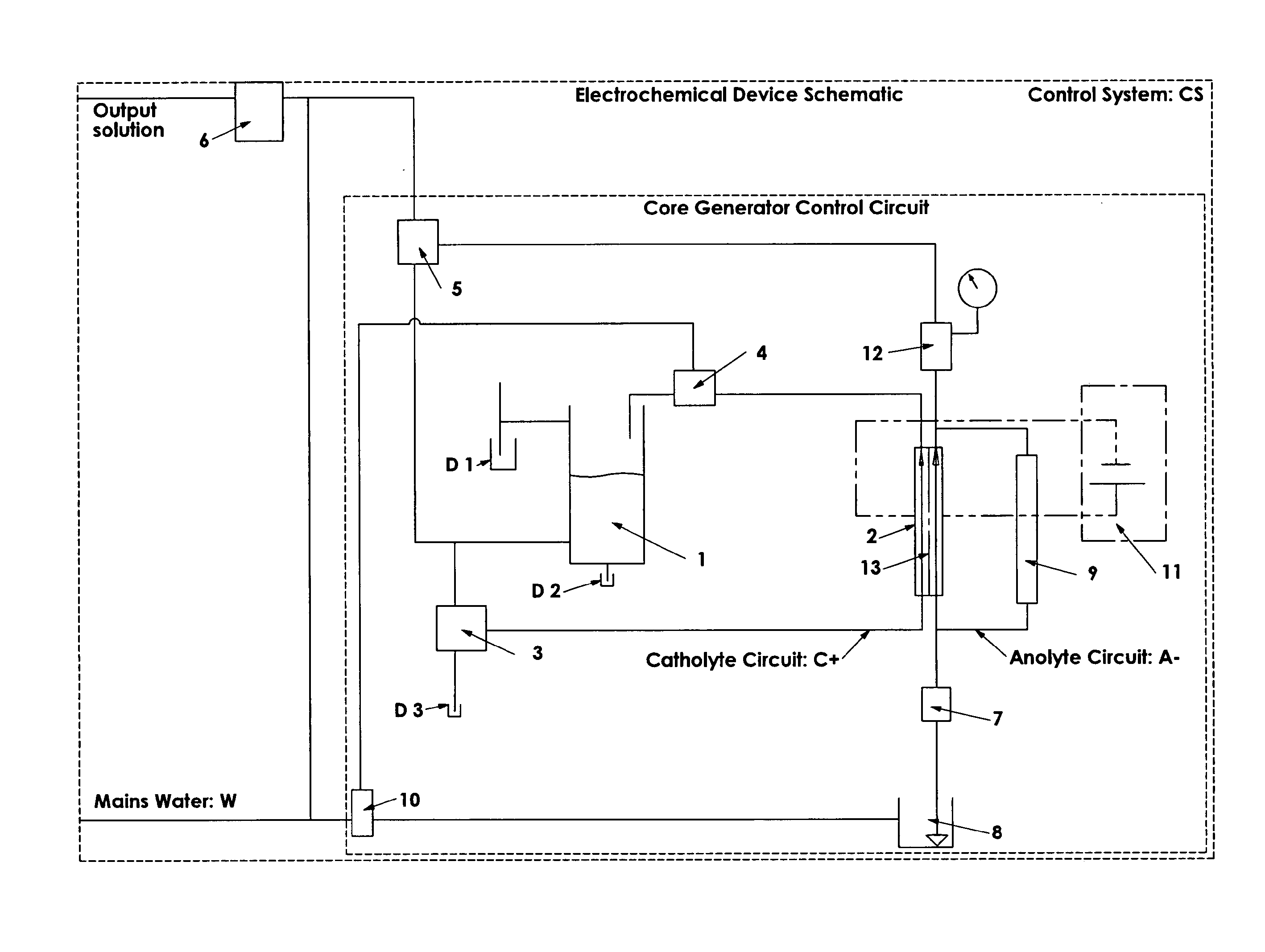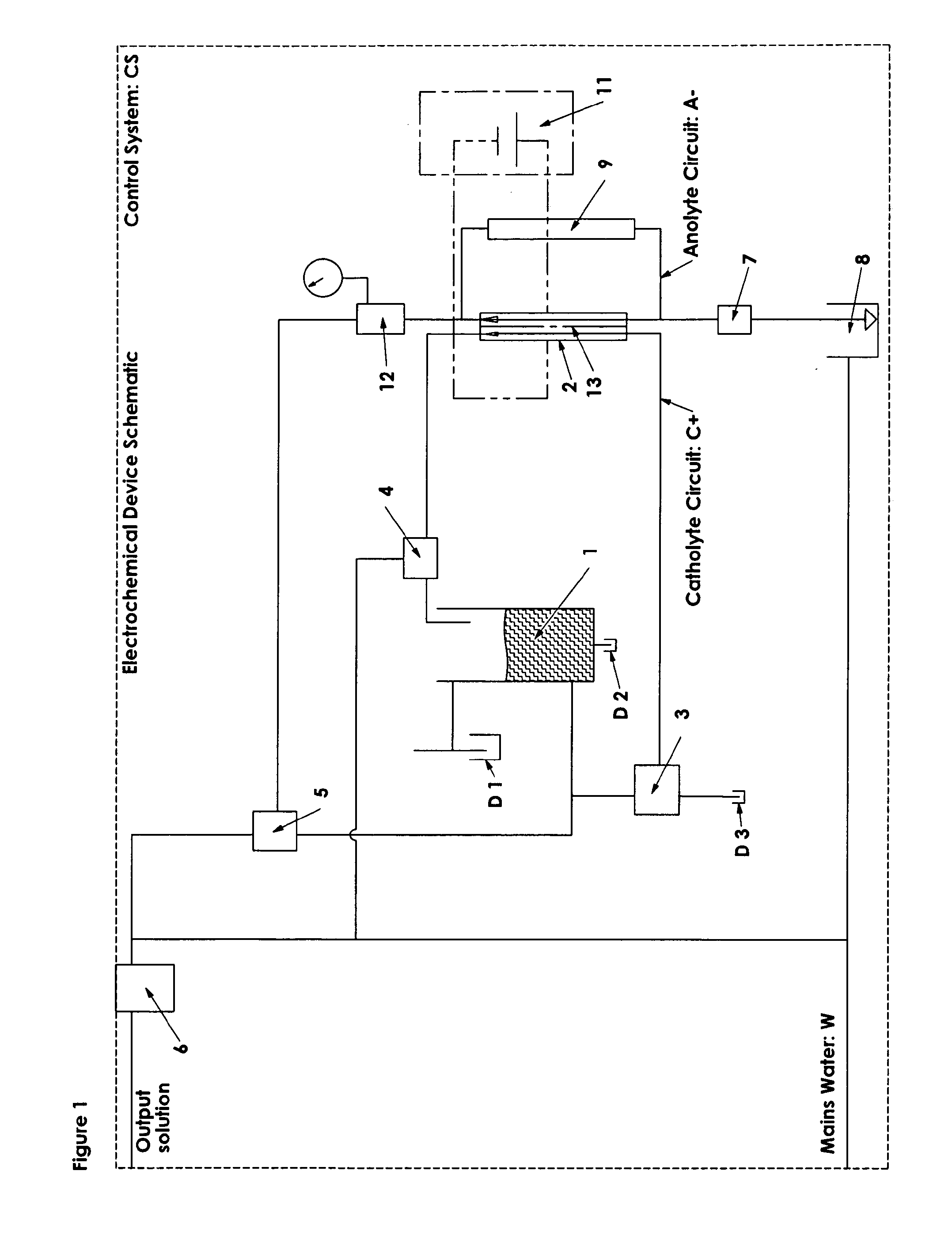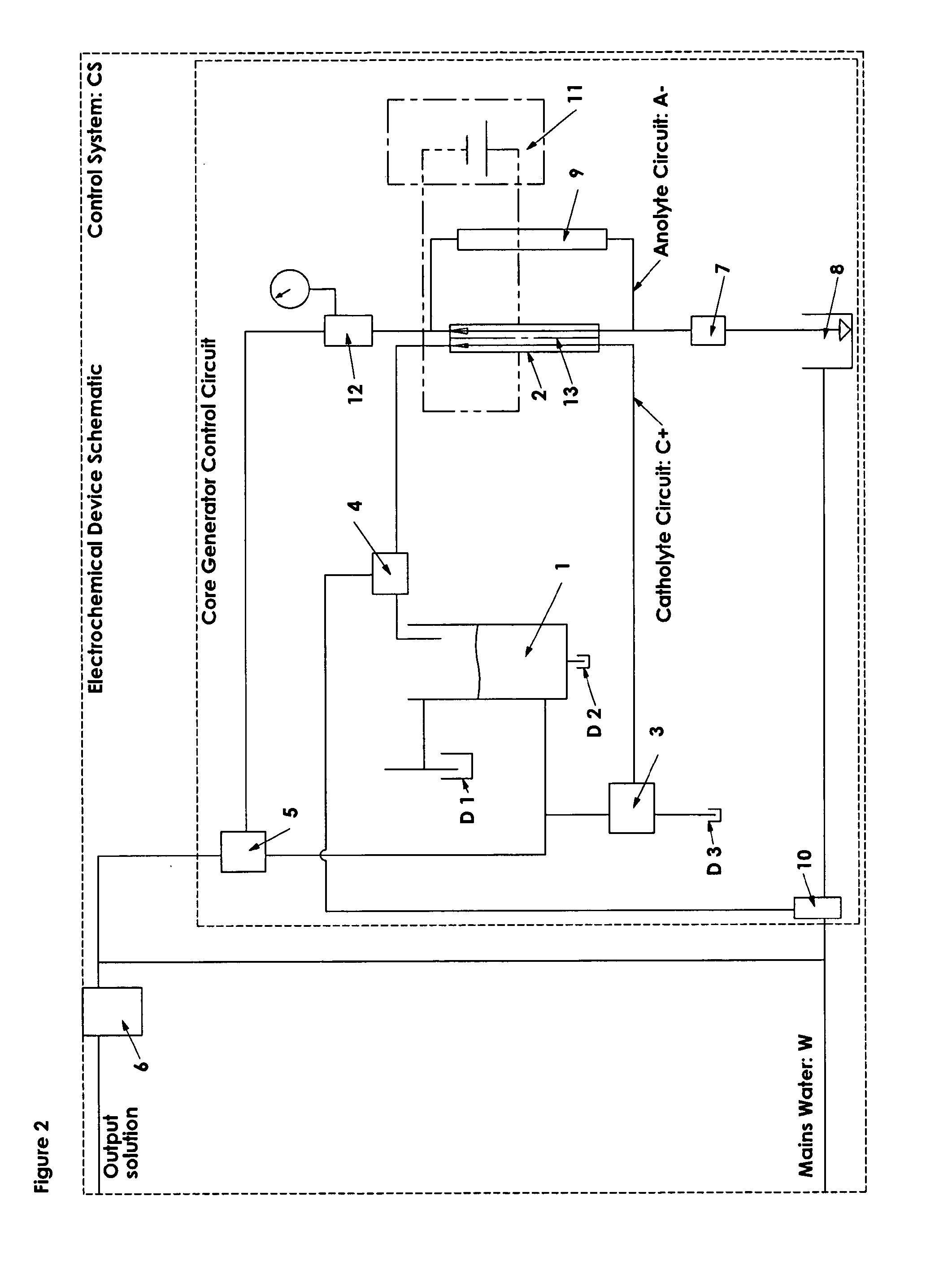This reaction is undesirable, as it reduces cell efficiency in terms of
chlorine production and is inhibited and minimised in an acidic
electrolyte environment.
Although it is known that free chlorine is an effective
biocide it is true to say that the precise mechanism of biocidal action is not yet fully appreciated.
Solutions of free chlorine solutions can be corrosive due to their elevated
Oxidation Reduction Potentials (ORP).
This problem is most acute for free chlorine solutions that also contain high concentrations of
chloride ion.
However many methods and devices for the electrochemical production of free chlorine solutions are characterised by poor conversion of
chloride ion to free chlorine and the
chloride ion concentrations in the
biocide attained using these devices can be of serious concern.
Existing systems do not function that well in this regard and a certain degree of output fluctuation is unavoidable.
Since the output from the cell is a function of the current passing through the cell, the effect results in the gradual decline of the current in the cell as
processing is taking place, resulting in a gradual decline in the concentration of the output solution from the cell over the same period.
Thus, the existing method of controlling the current in an electrochemical
processing cell is lacking and gives rise to an undesirable and inefficient rise and fall cycle in the output from the cell.
In an automated
biocide producing
system, this effect is unfavourable, since it leads to inconsistent
chlorine gas generation and biocide component output variability.
However, alkaline catholyte solution is corrosive and can damage the electrochemical cell and hydraulics, if it remains in the cell when the electrolysis is not taking place.
Currently, it is normal that during the
start up period, the initial output from the device is not suitable for commercial use until such time as the output is produced at the desired pH and that the pH is sufficiently stable (ensuring that the required species are present in the desired equilibrium concentrations).
During this period, the pH of the output biocide from the device cannot be kept stable, since the low
hydroxide concentration catholyte produced during the
start up period is not of sufficient strength to regulate the output pH of the device.
Generally, the effect leads to a long
start up period for the device, which result in the initial output being commercially undesirable and wasteful.
In general, electrochemical devices are sensitive to contaminants in the supply water.
A good example of
contamination is that occurring from use of “
hard water”, which essentially is water that has a high mineral content.
Hard water can result in mineral deposits that cause a change to the permeability of the electrochemical generating
cell membrane, resulting in decreased efficiency of the cell and eventual failure of the device.
Furthermore, on occasion, failure in device operation can result in unsafe conditions for operators, damage to the device itself or to other equipment in the vicinity of the electrochemical device.
However, such treatment is generally prohibited by the large costs associated with conditioning of the large volume of solutions required.
Gas pressure affects the operation efficiency of the device.
Moreover, excessively high pressures may result in damage to the cell semi-permeable membrane and may cause the device to fail.
On the other hand, if the pressure is too low, the device will take a long period to commence operating on start up.
It is worth noting that a regular failure mode of existing systems is excessive pressure and temperature in the electrolysis cell which may cause the membrane to leak, crack or break.
This is undesirable since such regulators are only adjustable manually and do not allow fine control of the
system and resulting outputs.
 Login to View More
Login to View More 


